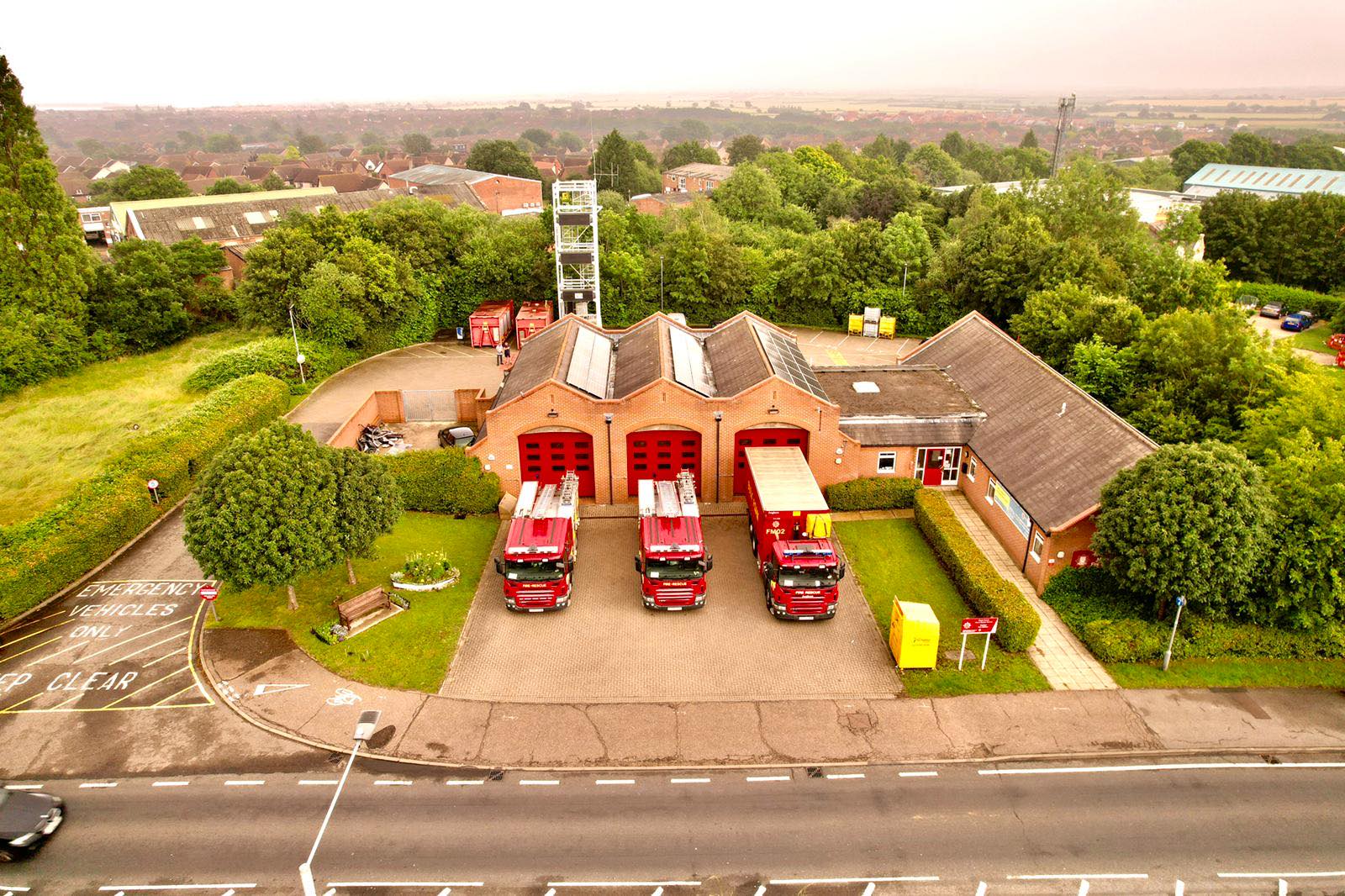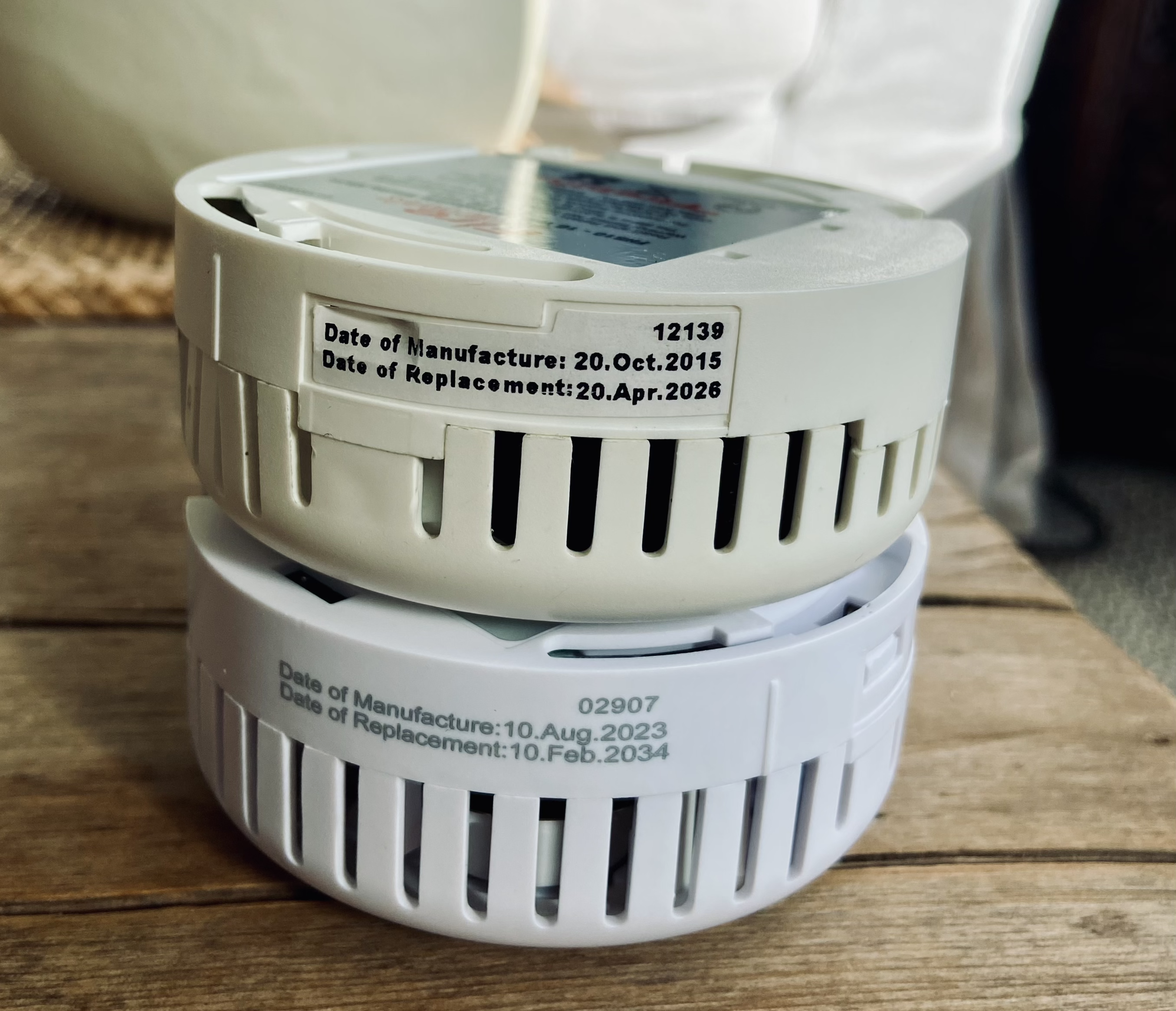The Ups & Downs P4
The Ups and Downs at the Top of the Ladder Part Four
The article in this five part series will focus on three more Essex chief officers who exhibited that great British custom of amateurism which often still can compete with the professionals on an even playing field or, in their case, a fire ground.
Samuel Davis B.E.M. – Romford Fire Brigade (in post from 1890 – c.1926)
Born in Hatfield Peverel in 1848 Captain Samuel Davis’s appointment as captain of the newly formed Romford Fire Brigade in 1890 sparked a dynasty of Davis family firemen who were to serve their local brigade with great distinction well into the next century. It is difficult to imagine a similar scenario occurring elsewhere. Samuel had been a battery sergeant major in the 1st Essex Artillery Volunteers (Barking) and as such was well versed in organising men from a position of authority.
Samuel Davis chief officer of the Romford Fire Brigade, looking every inch the sergeant major. (EFM archive)
In civilian life Samuel was a builder and as such was instrumental in building the Mawney Road Fire Station situated in close proximity to his builders’ yard, this fire station served the brigade well until 1960 when a new fire station was built at Pettits Lane North.
Dowsing & Davis Builders Yard opposite the fire station in Mawney Road. (EFM archive)
The advent of the Great War saw many firemen join up. Samuel, despite his career in the local volunteer artillery, was too old to follow them and stayed with the Romford Fire Brigade. This did not mean that he was precluded from war related incidents. On 14th September 1916 a massive explosion ripped through the Rainham Chemical Works which was rented from Messrs J.C. & J Field for the production of explosives, including picric acid and dinitrophenol. The explosion took the lives of seven of its workers and seriously injured 69. For his work at this disaster Samuel and six of his men were awarded the B.E.M.
The enlarged Mawney Road Fire Station c. 1935. (EFM archive)
During his 36 years, Samuel, the supremo of the Romford Fire Brigade, saw a transition from manual fire appliances to modern motor driven fire engines, but perhaps the most innovative fire appliance which saw service with his brigade was the quadricycle. This was a totally unique machine bedecked with firefighting equipment purchased from Messrs Merryweather just before the Great War.
The “Quad” pictured in Merryweather’s yard c 1912 (EFM archive)
The “Quad”, as it was affectionately known, was well used at Romford fires in the capacity of what we now know as a first-strike appliance. Amazingly the “Quad” carried 500ft of hose, a standpipe, turncocks, a hand pump, and other equipment. It carried a crew of four firemen who provided the motive power and could reach fires much quicker than those pulling a hand cart. Captain Davis felt that this type machine would benefit other similar brigades but there is little evidence to suggest they, for whatever reason, felt the same.
2
Brothers Stanley Davis, Samuel Davis (junior), William Davis part of the Davis dynasty in 1937 (History of Romford Fire Brigade 1890 to 2014 by Sam Gelder)
The Davis Dynasty
Samuel Davis, captain from 1890 – 1926 (died in service age 78)
Abraham Davis (Samuel’s brother) captain from January 1927 – 1932
Samuel J. F. Davis Junior (son of Abraham) captain from 1932 – c. 1940
Fireman Stanley Davis (brother of Stanley Junior) there in 1935
Fireman William Davis (brother of Stanley Junior) there in 1935
Fireman Arthur Davis (unknown lineage) one of the oldest firemen in 1935
Section Officer Charles Davis-Todd Romford NFS (then senior company officer Norwich 1941) (grandson of Samuel Davis) there in 1941
Rev Charles Fiennes Cholmondeley – Sampford Parish Boy Scouts’ Brigade (formed 1911)
Charles was born into an aristocratic family. His grandfather was Thomas Cholmondeley, 1st Baron Delamere. He followed in his father’s footsteps by taking holy orders. After leaving Clifton College he went up to Oxford graduating from New College with a BA and MA in classics in 1883. His father the Hon Henry Pitt Cholmomdeley was also an Oxford graduate his alma mater being Christ Church College graduating in 1837, also with a BA & MA. He later became Fellow of All Souls College and Honorary Canon of Gloucester. He was incumbent of St Mary Magdalene, Adlestrop, Gloucestershire for over 40 years - the village where Charles was born in 1863. His brother Francis Grenville Cholmondeley, BA & MA All Souls, Oxford, was incumbent of Adlestrop after his father. After graduating from Oxford Charles also took holy orders and was appointed curate at the picturesque Costwold village of Brockley where he lodged in a carpenter’s house. He married Katherine Courthorpe the daughter of a civil service commissioner at Camden, London in 1897. By 1901 he was incumbent of Saint Mary the Virgin, Little Sampford.
In between delivering sermons for his congregation and leg-breaks for the local cricket team Charles was a prominent local scout leader who enterprisingly moulded his scouts into an efficient band of young firemen unlike Reverend Hudson the vicar of Berden (featured in a previous article) who relied on a more mature flock. His brave band of fourteen scouts was formed in 1911 which probably was the only Boy Scouts’ fire brigade in the country. The nearest fire brigade was based at Saffron Walden, some nine miles away, and Charles’s suggestion to form the brigade was welcomed with open arms by the villagers who for many years had been concerned about fire cover in and around Sampford. They did all they could to bring the brigade to fruition. A village bazaar and a subscription brought in £43 enough to provide an up-to-date fire appliance with an escape ladder, 200 yards of hose and sundry fire extinguishing apparatus. A makeshift fire station was situated under the old arches of the rectory. The age of the Scouts was between ten and eighteen years. One night each week they undertook fire drills under the supervision of Charles. The alarm was raised by a bell in the rectory and
3
the boys would pull their fire appliance to the scene of the fire dressed in their scout uniform. They would not shy away from rescuing people from burning buildings and would practise rigging up life saving ropes to windows and if necessary carry the victims down in their arms. They would also give demonstrations, sometimes rescuing a young lady from a smoke-filled room by dashing in and throwing a sack over her head and dragging her to safety!
Their activities, as with all fire brigades, were not without personal danger. On the evening of May 14th, 1914 a fire broke out at Gamber Hall Farm, Great Bardfield and a stack of meadow hay was destroyed, the loss amounting to £5. It was stated that some boys were playing with matches near the stack (an ever-present source of combustion in those days). The Barfield Fire Brigade and the Boy Scouts Fire Brigade from Sampford attended. On the way back to Sampford Rectory the Scouts’ fire engine ran down Mill Hill. A scout named William Clarence Spurgeon, thirteen, fell down. The other scouts could not stop the runaway fire engine which passed over William’s head. He was attended by Doctor Johnson at Sampford Rectory (Chelmsford Chronicle 22.05.1914). Hopefully William made a speedy recovery. It is not beyond the bounds of possibility that William was the country’s youngest ‘fireman’ ever to be injured in the call of duty.
The Sampford Scouts Fire Brigade, c. 1911, An article from an unidentified newspaper written in 1911 ‘cocking a snook’ at modern health and
safety practices
In 1912 an article appeared in the national press featuring members of the clergy who when not providing spiritual support for their congregations were providing fire cover for them as chief officers of their parish fire brigades. The Reverend F.W Knox of the Belvoir Castle Fire Brigade, Leicestershire, and the Reverend F.C. Hill of the Shere & Albany Fire Brigade, Surrey were identified in the article which sadly omitted to mention two prominent Essex clergymen/chief officers, namely, Charles and the aforementioned Reverend Herbert Kynaston Hudson.
4
Charles’s career after he left the living of Sampford is patchy to say the least, there is however a record that in 1928 he left Essex for Montreal, Canada but little is known about his stay there or whether he continued with his firefighting exploits. Nonetheless, he returned to England and resided at Bishopsteignton, Devon until his death at nearby Newton Abbot in 1958.
Captain Henry “Harry” Thomas Garon - Southend on Sea Fire Brigade.
Mr H.T. Garon Chief Officer Southend on Sea Fire Brigade,1891-1906 (EFM)
It would be unthinkable not to include this gentleman in this series of pen-pictures of prominent Essex chief officers. Harry Garon was a member of a prominent local family of grocers. He, in turn, was a butcher and managing director of a well-known Southend restaurant, and like most other chief officers he was not a professional fireman. Undoubtedly he and other chief officers of the brigade such as Walter Harvey – a publican - and Harry’s son Percy Ganon played their part in transforming their brigade into one of the finest in the country. This section will explore the achievements of Harry Ganon the third chief officer of the Southend on Sea Fire Brigade. In particular it will examine the role he played in fire brigade competitions.
In days of yore fire brigade competitions were taken very seriously and were a platform to highlight the prowess of a fire brigade. Local, district and national competitions were regular features in the calendar which can be equated to major modern-day sporting events, and, if a brigade was successful in a major competition it was lauded by jubilant townsfolk. Essex was particularly fortunate in having a number of fire brigades which excelled at every level of competitions.
He was all too aware that previous chief officers had engaged in early fire brigade competitions, with some considerable success, but he was determined to go one step further and ensure: “that Southend Fire Brigade shall be second to none in the county. His desire is that, in addition to cup hunting at competitions, his men shall be smart at turning out to a fire”. (Southend Standard & Essex Weekly Advertiser, Thursday 30. 07.1891).
Although participating in a number of competitions, away from home, Southend hosted its first fire brigade competition near the Midland Hotel on Wednesday 23 September 1891 and no doubt Harry would have been very disappointed at his brigade’s performance as Southampton Fire Brigade was the overall winner with Brighton finishing second. Southampton did the same the following September much to the chagrin of Southend’s chief officer. Harry was a man not to be trifled with although he was a man of great virtue but by all accounts he had a capricious temperament which came to the fore at times. On Monday 22 May 1893 Southend took part in the All Essex fire brigade competition hosted by the Chelmsford Fire Brigade, under the patronage of the Mayor and Corporation of Chelmsford. The proceedings took place at King’s Head
5
Meadow (now a car park). The Chelmsford Chronicle penned a graphic account of an unfortunate incident involving Chief Officer Garon and his men which occurred that day:
At the close of the four-men competition the Captain of the Southend-on-Sea Fire Brigade (Mr. Garon) declared that he would not allow his men contest a tie with the Leyton team, or to enter any further into the competitions. He stated that he had been “swindled," and could not think of doing any more. He had been done out of three prizes, and that was enough. The Mayor of Chelmsford, the members of the committee and others endeavoured to prevail upon the Brigade to stay, enter a protest in a proper manner, and go on with the competitions. Mr. Garon declined to listen to these requests, and said he intended to leave the ground. Although it was advertised that the Southend Brigade would give exhibition with their new steam fire engine that would have to be foregone. The engine was then horsed, and the Brigade left the ground. At the close of the competitions, the Mayoress (Mrs. Whitmore) gracefully presented the prizes to the winners. — Mr. John Darby proposed a vote of thanks to her for her attendance, expressing the wish, in connection with the withdrawal the Southend Brigade, that more decent feelings had been exhibited at the ground. [Applause.] He was very sorry one man lost his temper and was not present to take his prizes. A man had not bred enough in him to stand defeat; he had no business to compete all. [Cheers.] ... His Worship [the Mayor] expressed a sincere regret that the men of Southend did not stay and complete their engagements. If they had stayed they would have shown a much better feeling, and a much better temper. [Applause.] —Capt. Miller, of the Leyton and Leytonstone Fire Brigade, proposed a vote of thanks ... He observed that the competitions had been conducted in a very able manner. They all knew very well that everybody had had fair dealings. [Cheers.]
This unfortunate incident bubbled on in the press for some weeks and from what was stated, by others, Harry certainly had not covered himself in glory!
It was plain to see that Harry’s venture into competitions did not go according to plan and certainly did not meet his aspirations in the “cup hunting” stakes. Notwithstanding that, and a few other traumatic incidents, Harry left a positive legacy and it was recognised at his farewell presentation dinner at the Ship Hotel on 2 May 1906 when he was complimented for the work he had done for the brigade throughout his 23 year’s service – fifteen of which were as Captain during which time he supervised the move to the new fire station at Tylers Avenue, one of the finest and best equipped in the country, as well as transforming the Brigade into one of the most efficient in the country. There was also a subscription of £155 (over £13, 000 today) for him indicating the esteem his community had for him.
The massive turnout for Chief Officer Harry Garon funeral, November, 1911. (EFM)
6
Chief Officer Percy Garon, George Medal & Military Cross (EFM)
Harry passed away on 31 October 1911, he was only 49 years old. He died secure in the knowledge that he had paved the way for his beloved brigade to be “second to none in the country”, when in July 1908 the Southend on Sea Fire Brigade won a number of firefighting awards in the National Competitions held at Scarborough under Chief Officer W. G. Harvey. The Garon legacy was set to continue when in 1934 his son Percy Garon GM, MC. became chief officer of the Southend on Sea Fire Brigade until 1941 and then Number 11 Fire Force Commander 1941 to 1945.
7


